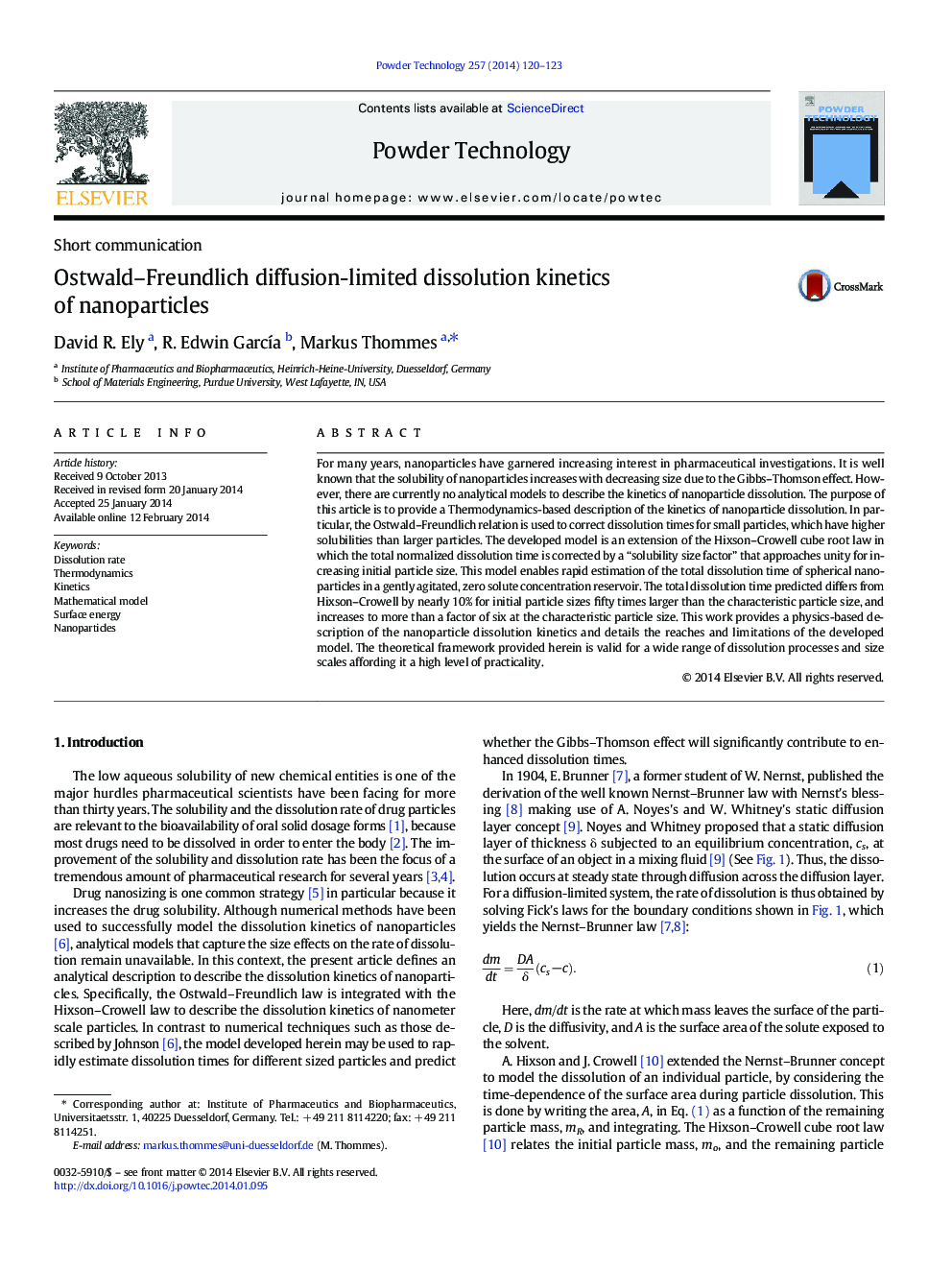| کد مقاله | کد نشریه | سال انتشار | مقاله انگلیسی | نسخه تمام متن |
|---|---|---|---|---|
| 236208 | 465665 | 2014 | 4 صفحه PDF | دانلود رایگان |
• A thermodynamics-based description of nanoparticle dissolution rate was developed.
• An analytical model for total dissolution time was derived in dimensionless form.
• The model enables rapid estimation of total dissolution times for nanoparticles.
• The Ostwald–Freundlich relation was used to correct dissolution times.
• The model is an extension of the Hixson–Crowell cube root law.
For many years, nanoparticles have garnered increasing interest in pharmaceutical investigations. It is well known that the solubility of nanoparticles increases with decreasing size due to the Gibbs–Thomson effect. However, there are currently no analytical models to describe the kinetics of nanoparticle dissolution. The purpose of this article is to provide a Thermodynamics-based description of the kinetics of nanoparticle dissolution. In particular, the Ostwald–Freundlich relation is used to correct dissolution times for small particles, which have higher solubilities than larger particles. The developed model is an extension of the Hixson–Crowell cube root law in which the total normalized dissolution time is corrected by a “solubility size factor” that approaches unity for increasing initial particle size. This model enables rapid estimation of the total dissolution time of spherical nanoparticles in a gently agitated, zero solute concentration reservoir. The total dissolution time predicted differs from Hixson–Crowell by nearly 10% for initial particle sizes fifty times larger than the characteristic particle size, and increases to more than a factor of six at the characteristic particle size. This work provides a physics-based description of the nanoparticle dissolution kinetics and details the reaches and limitations of the developed model. The theoretical framework provided herein is valid for a wide range of dissolution processes and size scales affording it a high level of practicality.
Figure optionsDownload as PowerPoint slide
Journal: Powder Technology - Volume 257, May 2014, Pages 120–123
